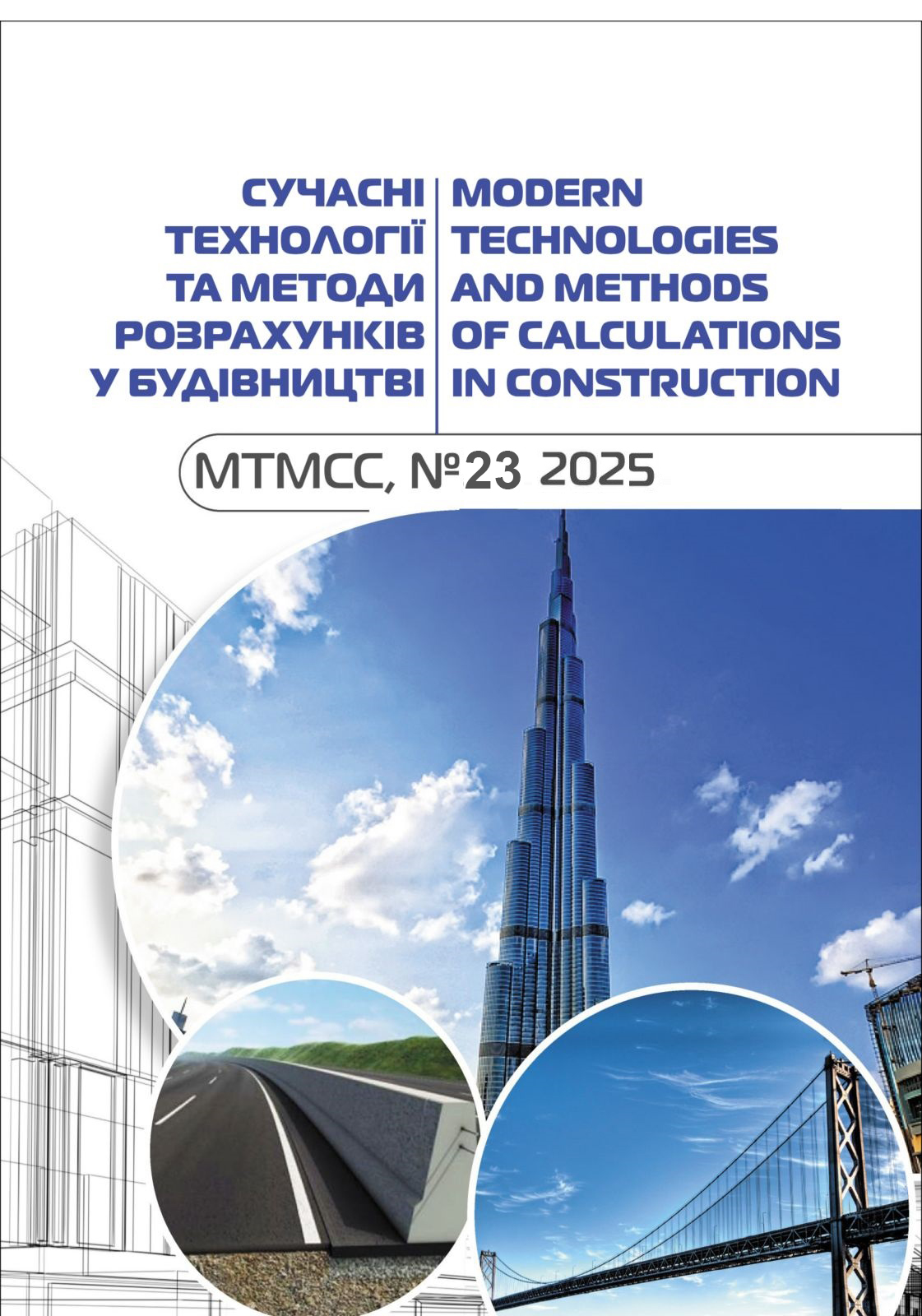Numerical FEM modeling of deformation solid and glulam reinforced timber beams
Abstract
The article presents the results of numerical modeling of the deformation of wooden beams made of laminated and solid timber, performed using the LIRA-SAPR 2024 R2.3 software suite, which utilizes the finite element method (FEM). The possibility of using this software for the design of reinforced timber structures, an issue relevant to the reconstruction and reinforcement of building elements, is explored. The modeling process enables a detailed analysis of the stress-strain state of structures, predicting their behavior under load, and comparing the results with experimental studies and traditional deformation methods. The modeling was carried out taking into account the orthotropy of timber, for which three-dimensional finite elements were used to describe the material's mechanical properties. Specifically, the elastic moduli along and across the grain of the wood, as well as Poisson's ratios, were incorporated, determined experimentally. Reinforced elements were modeled using analogous elements representing carbon strips and steel reinforcement. The obtained numerical results were compared with experimental data and results derived using the deformation method. Statistical analysis showed that the numerical modeling in the LIRA-SAPR software suite has an average deviation from the experimental data of 21% for laminated timber beams and 6.5% for the deformation method. For reinforced beams, the deviation was 29% for FEM and 7.3% for the deformation method. The results of the numerical modeling showed that the LIRA-SAPR software suite allows for the accurate determination of stresses and deformations in wooden structures; however, the deformation method demonstrated higher accuracy for reinforced elements. Statistical analysis confirmed that both approaches are effective for design, particularly for reinforced timber structures, while the deformation method proves to be more accurate under increased load conditions. It was concluded that for the design of reinforced timber structures, both approaches can be used depending on the required accuracy and modeling speed








